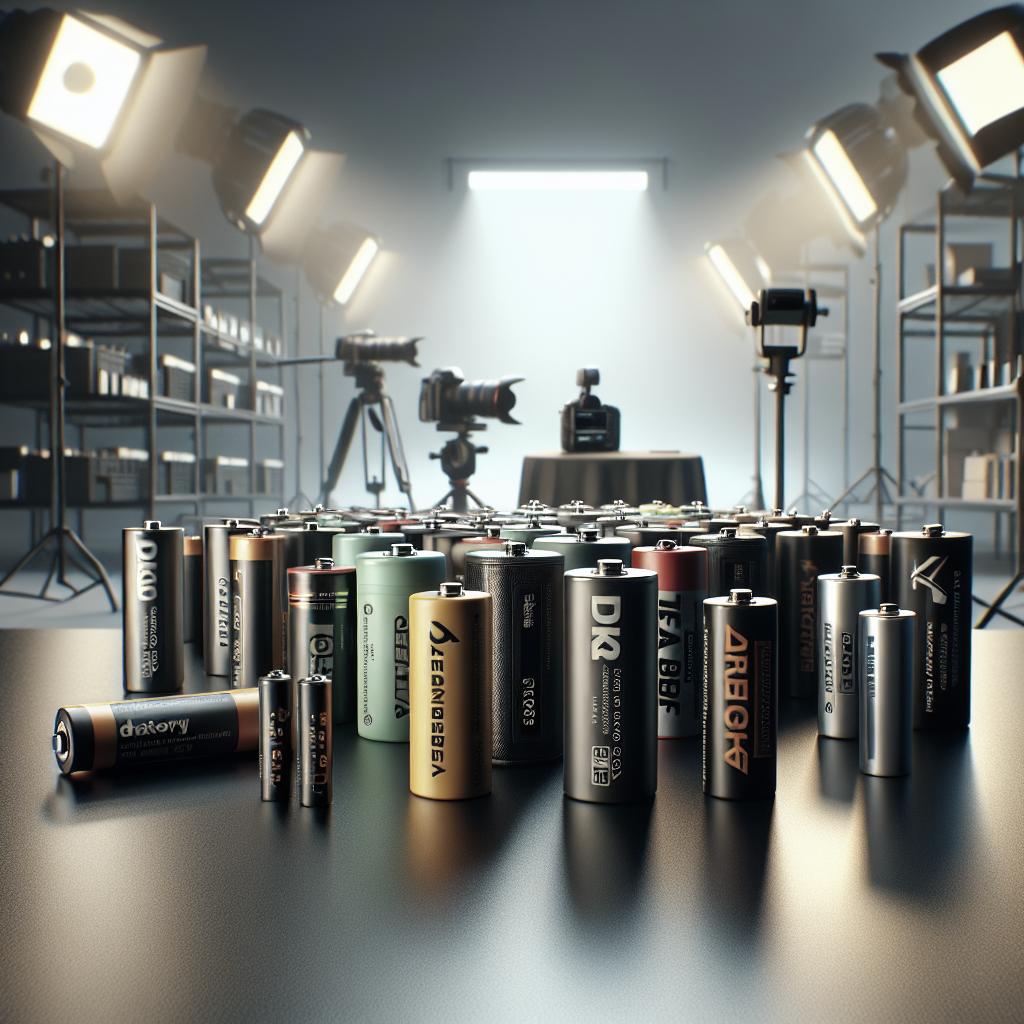As a photographer, ensuring that you have the right batteries for your camera is crucial for optimal performance and reliability in various shooting conditions. This blog post will guide you through the best camera batteries available today, including the trusted ReCyko rechargeable batteries. We will explore how long these batteries typically last, which types are perfect for camera flashes, and whether leaving batteries in your camera is advisable. Additionally, we will share tips on maintaining battery lifespan to keep your gear functioning at its best. Let’s dive into the world of camera batteries to help you make the best choices for your photography needs.
Batteries for Photographers
Photography gear can be complex and expensive, but camera batteries play an unassuming yet crucial role in the ecosystem. The evolution of battery technology has not only made devices more reliable but also enhanced the overall performance of cameras. From Lithium-Ion (Li-ion) to Nickel-Metal Hydride (NiMH), the range of available batteries offers different benefits and specifications. Li-ion batteries dominate the digital camera market. These batteries are known for their high capacity and ability to hold a charge over long periods. Additionally, they are lightweight, making them ideal for travel and extended photography sessions. NiMH batteries, on the other hand, are often found in older or more specialized camera models. While they don’t hold a charge as long as Li-ion batteries, they have the advantage of being rechargeable, which can save on long-term costs.
Discover our assortment of ReCyko rechargeable batteries
ReCyko rechargeable batteries are highly recommended for photographers who prioritize sustainability and cost-effectiveness without compromising on performance. These batteries offer high capacity and long lifecycle, making them a popular choice among both amateur and professional photographers. ReCyko batteries are particularly advantageous because they maintain a consistent voltage level throughout their charge cycle. This ensures consistent performance from your camera, reducing the chances of missed shots due to battery failure. They are designed to be recharged multiple times, significantly reducing the waste and expense associated with single-use batteries. ReCyko also offers a range of chargers tailored for different battery types. These chargers are efficient, with fast recharging capabilities, meaning you spend less time waiting and more time shooting. The eco-friendly aspect of ReCyko batteries adds an extra layer of appeal, contributing to the growing demand for sustainable photography gear.
How long do rechargeable batteries last in a camera?
The lifespan of rechargeable batteries in a camera can vary significantly based on the type of battery, camera usage, and environmental conditions. On average, a fully charged Li-ion battery can last anywhere from 300 to 500 shots, depending on the camera model and settings. With less frequent usage, these batteries can last several days or even weeks. NiMH batteries generally offer a slightly lower performance, averaging about 200 to 400 shots per charge. However, these batteries are more affordable and can be recharged more frequently without significant degradation in performance. Real-world battery life is also influenced by factors such as temperature, screen usage, and frequency of flash use. Seasoned photographers know that keeping a few spare batteries on hand is crucial, especially for extended shoots or travel. Investing in a couple of high-quality rechargeable batteries can make a world of difference in ensuring you’re always ready to capture the perfect moment.
What are the best batteries for a camera flash?
Camera flashes often require batteries that can deliver quick bursts of power. For this purpose, high-capacity NiMH rechargeable batteries are commonly recommended. These batteries can provide the rapid energy discharge necessary for fast flash recovery times, which is crucial for action and event photography. Eneloop Pro batteries, for example, are highly regarded in the photography community for their reliability and performance in high-drain devices like camera flashes. They offer high capacity, up to 2,500 mAh, and can be recharged up to 500 times, making them a cost-effective and eco-friendly choice. Lithium primary batteries are another viable option for camera flashes. While not rechargeable, they hold a charge longer than NiMH batteries and are less affected by cold temperatures, making them ideal for outdoor shoots in varying weather conditions. However, the inability to recharge them can make them a less sustainable option.
Can you leave batteries in cameras?
Leaving batteries in your camera when not in use is generally not recommended, especially if the camera will be stored for an extended period. Batteries left inside the camera can leak, especially in high humidity or fluctuating temperatures, causing internal damage to the device. In addition, even when the camera is turned off, there is often a small amount of power drainage known as parasitic drain. This can slowly deplete the battery, reducing its overall lifespan and performance. It’s good practice to remove batteries after each use and store them in a cool, dry place. If you do decide to leave the batteries in the camera for short periods, ensure to check the battery levels periodically and remove them if the camera will not be used for several weeks or months. This simple habit can help prolong the life of both your camera and its batteries.
How to maintain the lifespan of camera batteries
Maintaining the lifespan of your camera batteries requires a combination of proper usage, storage, and charging practices. Always use chargers specifically designed for your battery type, as using the wrong charger can decrease battery efficiency and lifespan. Avoid overcharging by unplugging the charger once the battery is fully charged. When storing batteries, keep them in a cool, dry place away from direct sunlight or extreme temperatures. Storing them at room temperature can prevent them from draining too quickly and prolongs their overall lifespan. For long-term storage, consider partially charging the batteries to around 50% to 70% to maintain their health over time. Regularly cleaning the battery contacts can also make a significant difference. Remove any dust or corrosion using a dry cloth, avoiding any liquid cleaners that could damage the contacts. By adopting these simple maintenance practices, you can ensure that your camera batteries provide reliable performance for years to come.
Let’s Stay in Touch!
We value the relationship we’ve built with our community of photographers and tech enthusiasts. Whether you’re a seasoned professional or just starting on your photographic journey, having the right equipment, including reliable camera batteries, is essential. Stay connected with us for more insights, tips, and reviews to keep your photography gear in top shape. Subscribe to our newsletter for regular updates on the latest in camera technology and accessories. Follow us on social media to participate in discussions, share your experiences, and learn from fellow photography enthusiasts. Your feedback helps us deliver content that resonates with your needs and interests. Let’s continue exploring the world of photography together, from capturing the perfect shot to ensuring your gear’s longevity with the best tips and recommendations.
| Aspect | Details |
|---|---|
| Best Battery Types | Li-ion for high capacity and lightweight, NiMH for rechargeability and cost-effectiveness |
| ReCyko Batteries | Sustainable, high capacity, fast charging, eco-friendly |
| Battery Lifespan | 300-500 shots for Li-ion, 200-400 shots for NiMH; affected by usage and conditions |
| Best for Flash | High-capacity NiMH (e.g., Eneloop Pro), or Lithium primary batteries |
| Storage Practices | Remove batteries when not in use, store in a cool, dry place |
| Maintenance Tips | Use correct chargers, avoid overcharging, clean battery contacts regularly |
| Stay Connected | Subscribe to newsletter, follow on social media, share feedback |


